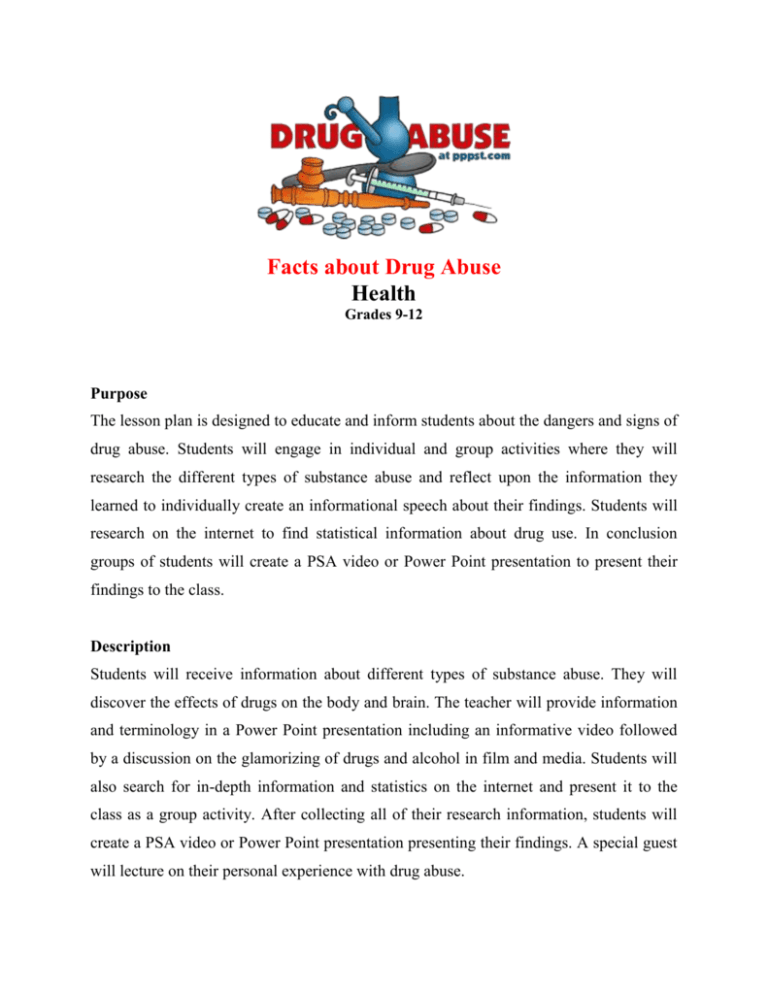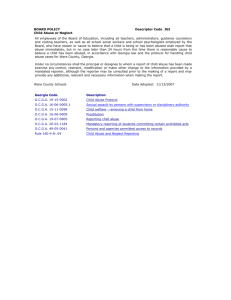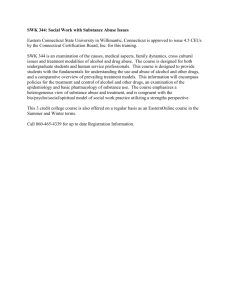lessonplan.doc - Cal State LA
advertisement

Facts about Drug Abuse Health Grades 9-12 Purpose The lesson plan is designed to educate and inform students about the dangers and signs of drug abuse. Students will engage in individual and group activities where they will research the different types of substance abuse and reflect upon the information they learned to individually create an informational speech about their findings. Students will research on the internet to find statistical information about drug use. In conclusion groups of students will create a PSA video or Power Point presentation to present their findings to the class. Description Students will receive information about different types of substance abuse. They will discover the effects of drugs on the body and brain. The teacher will provide information and terminology in a Power Point presentation including an informative video followed by a discussion on the glamorizing of drugs and alcohol in film and media. Students will also search for in-depth information and statistics on the internet and present it to the class as a group activity. After collecting all of their research information, students will create a PSA video or Power Point presentation presenting their findings. A special guest will lecture on their personal experience with drug abuse. Activities Preparation Collect drug abuse information from websites Collect pamphlets from community organizations, AA, and medical clinics to pass around to students for review Set up a time to visit the computer lab at school Create a power point presentation with drug abuse information including a video Check out video cameras from school Arrange for a speaker to come and give their personal experience with drugs or a loved one on drugs. Procedures The teacher will provide information and terminology in a Power Point presentation including an informative video followed by a discussion on the glamorizing of drugs and alcohol in film and media. Students will engage in an individual activity where they will research the different types of substance abuse and reflect upon the information they learned to individually create a informational speech. Students will also search for in-depth information and statistics on the internet and present it to the class as a group activity. After collecting all of their research information, students will create a PSA Nets Indicators 2,3,4,5,6 1,2,4,5,6 1,2,4,5,6 1,2,3,4,5,6 video or Power Point presenting their findings. presentation Tools & Resources Software: Microsoft Power Point Video Editing Program Websites http://helpguide.org/ http://teens.drugabuse.gov/ http://www.youtube.com/ Assessment Students will be assessed on their informative speeches and PSA video or Power Point presentation. They will be evaluated using a rubric created from the Rubistar website. Credits Lindsey Rangel RubiStar Rubric Made Using: RubiStar ( http://rubistar.4teachers.org ) Oral Presentation Rubric : Drug Abuse Informative Speech Teacher Name: Ms. Rangel Student Name: CATEGORY ________________________________________ 4 3 2 1 Preparedness Student is completely prepared and has obviously rehearsed. Student seems pretty prepared but might have needed a couple more rehearsals. The student is somewhat prepared, but it is clear that rehearsal was lacking. Student does not seem at all prepared to present. Listens to Other Presentations Listens intently. Does not make distracting noises or movements. Listens intently but has one distracting noise or movement. Sometimes does not appear to be listening but is not distracting. Sometimes does not appear to be listening and has distracting noises or movements. Stays on Topic Stays on topic all Stays on topic Stays on topic It was hard to tell (100%) of the most (99-90%) of some (89%-75%) what the topic time. the time. of the time. was. Posture and Eye Stands up Contact straight, looks relaxed and confident. Establishes eye contact with everyone in the room during the presentation. Content Stands up straight and establishes eye contact with everyone in the room during the presentation. Sometimes stands up straight and establishes eye contact. Slouches and/or does not look at people during the presentation. Shows a full Shows a good Shows a good Does not seem to understanding of understanding of understanding of understand the the topic. the topic. parts of the topic. topic very well.





